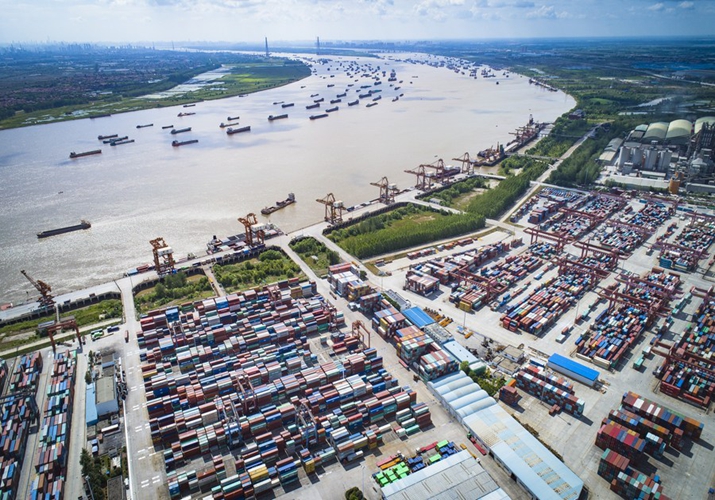China’s Long March

In order to move forward, Xi’s thought underscores the mobilization of the Party cadres to a level of alertness and discipline that was last seen during Mao, where deliverables, governance, and decisions are taken with Party ideology and the people’s well-being at their heart.
Xi Jinping Thought on Socialism with Chinese Characteristics for a New Era is three-pronged. First, it factors in the history of the revolution led by the Communist Party of China (CPC) and the journey of sacrifice and nation-building that ensued thereafter. Second, it is the acknowledgement and appreciation of the fact that China has arrived, and become a moderately prosperous society. And third, it affirms that this is not the end, but the continuation of the great social revolutions of the Chinese people led by the CPC.
The thought also reinforces the triangle that is the Chinese people, the CPC and the state. It is the harmonious interplay and deep intertwinement of these three pillars that form the prerequisite for taking the revolution forward and implementing the thought successfully. Xi continues to remind the CPC and the Chinese people that they are two sides of the same coin, and that one of them cannot be successful without the other. And a “people-centered approach” is at the center of his thought.
Furthermore, a key aspect is the goals and challenges that Xi sees for China in the foreseeable future. While the U.S. sees China and Russia as the biggest challenges to its stability and security, the issues for Xi remain domestic. The top priority for him continues to be eradicating absolute poverty and building a moderately prosperous society in all respects.
Since 2021 is the centennial celebration of the CPC, it is crucial that Xi delivers the livelihood and standard of living that its forefathers promised to the Chinese people. Often, he has asked CPC members to remain true to the “original aspiration” of the Party, which is to “seek happiness for the Chinese people and rejuvenation for the Chinese nation,” an important converging point between Mao Zedong Thought, Deng Xiaoping Theory and Xi Jinping Thought on Socialism with Chinese Characteristics for a New Era. The convergence of the three important leaders’ vision is deep-rooted in the legitimacy of the CPC, as its delivery on economic growth and poverty alleviation is unmatched to date.

Understandably, China’s outlook on national security and fundamental core interests are rooted in maintenance of domestic stability and elimination of poverty. By continuing the reform and opening up started by Deng in 1978, Xi carefully distinguishes between the body-politic of the People’s Republic of China, emphasizing socialism with Chinese characteristics, from the Chinese economy, which he is cautiously yet steadily liberalizing.
Xi deconstructs the traditional liberal theory of Western democracy by introducing the Chinese model of governance to the world, which so far seems to be working. Xi’s thought has internationalized Chinese socialism, and unveiled to the world what constitutes China 2.0. The fact that this is a break from past precedence signifies China’s renewed confidence in itself, as well as the rejuvenation of the Chinese people and state, and that it is sufficiently self-assured to introduce itself, with its fundamentally communist identity, to the rest of the world. The internationalization of this ideology is manifested in the publication of three volumes of Xi Jinping: The Governance of China that have been launched in all major capitals of the world and translated into different languages.
A key component of his thought is that of the Chinese dream of great rejuvenation for the Chinese nation. The century of humiliation, which is embedded in the collective Chinese consciousness, is used to motivate the CPC to reach what Xi calls “center stage,” which can be correlated to the ancient status of China as the Middle Kingdom. The century of humiliation, which saw China being bullied, colonized and economically exploited, by foreign powers, has made the Xi-led CPC vow to regain China’s previous prestige and status in the world, which is alluded through the reference to rejuvenation of the Chinese nation.
China sees the past 200 years as an aberration, where the West dominated the political and economic realm. The rejuvenation is in the context of its civilizational history of 5,000 years, where China engaged in commerce with most of the world, held an important role in supporting neighboring states, and was scientifically and technologically ahead of the rest of the world. Xi chose a symbolically telling venue to first use this slogan of the Chinese dream of great rejuvenation for the Chinese nation, the National Museum’s Road to Revival exhibition, which details China’s suffering at the hands of colonial powers in the 19th and 20th centuries.
At the root of the rejuvenation is the self-introspection, internal reform and discipline of the Party. The unprecedented accountability campaign prosecuted “flies, foxes and tigers,” ridding the Party of individuals that Xi says had contaminated the system.
In order to move forward, Xi’s thought underscores the mobilization of the Party cadres to a level of alertness and discipline that was last seen during Mao, where deliverables, governance, and decisions are taken with Party ideology and the people’s well-being at their heart. Indeed, China is preparing for another Long March.
This is an edited version of an article published in Pakistani newspaper The News International. The author is executive director of the Pakistan-China Institute.
 Facebook
Facebook
 Twitter
Twitter
 Linkedin
Linkedin
 Google +
Google +










